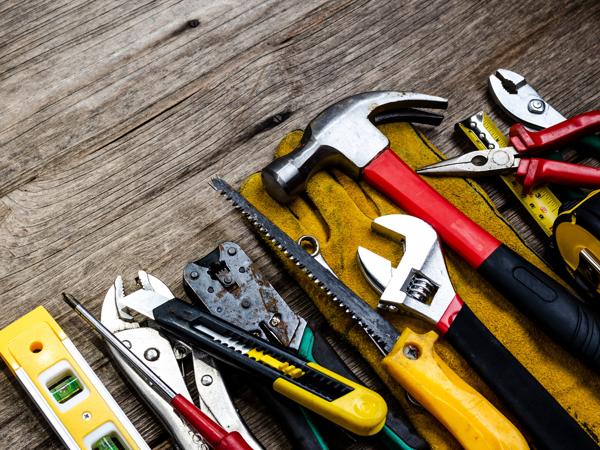Home improvement and renovation can be both thrilling and daunting. The process of transforming your living space into something new takes time, patience, and the right tools. Diving into a project without the proper equipment can make the difference between success and unnecessary frustration.
In this guide, we'll explore some fundamental tools every DIY enthusiast should consider having in their toolkit. Remember, acquiring these tools gradually and learning to use them effectively can make your projects smoother and more enjoyable.
Hand Tools
Hammer
A trusty hammer is indispensable for a variety of tasks. Whether you are hanging pictures, assembling furniture, or performing light demolition, a claw hammer is versatile and often the go-to tool for beginners and seasoned renovators alike.
Screwdrivers
A basic set of screwdrivers, both flathead and Phillips, is crucial. They are needed for assembling furniture, installing hardware, and countless other projects. Invest in a set with different sizes to accommodate various tasks.
Tape Measure
Before cutting or installing anything, measuring accurately is a must. A 25-foot tape measure is typically a good length for most home projects, offering both practicality and easy handling.
Utility Knife
From opening boxes to trimming excess material, a utility knife is invaluable. Ensure you have spare blades, as keeping them sharp results in cleaner cuts and safer handling.
Power Tools
Electric Drill
An electric drill, preferably a cordless one for flexibility, is a cornerstone of home renovation. Not only does it drill holes, but it also drives screws quickly and efficiently. Consider models with varying speed settings for delicate and robust tasks. You can find reviews of various models on our Tool Reviews page.
Circular Saw
For those tackling carpentry or larger renovation tasks, a circular saw can make straight cuts in wood and other materials. It's helpful for building shelves, cutting lumber, or fabricating furniture components.
Sander
Smooth surfaces are essential for professional-looking finishes. An electric sander, such as an orbital or belt sander, helps prepare surfaces for painting or staining by polishing them smoothly.
Safety Equipment
Safety Glasses
Your protection is paramount. Safety glasses shield your eyes from flying debris when cutting, drilling, or sanding. Always wear them to prevent accidents.
Work Gloves
Durable work gloves protect your hands from cuts, splinters, and abrasions. Opt for gloves that provide both protection and grip so as not to compromise on handling comfort.
Specialty Tools
Stud Finder
For hanging heavy objects or installing shelving, a stud finder helps locate the studs behind the walls, ensuring items are securely attached.
Level
An invaluable tool for ensuring horizontal or vertical alignment, a level prevents the embarrassment and hassle of crooked installations.
Pipe Wrench
For plumbing tasks, a heavy-duty pipe wrench adjusts and tightens pipes. Owning one can be beneficial for managing leaks or installing plumbing fixtures.
Conclusion
Having the right tools on hand can ease many renovation challenges. As you build your toolkit, remember that quality often outweighs quantity. Investing in reliable tools saves time and frustration, leading to better results.
Approach each project with patience and willingness to learn. Each tool serves its purpose, helping you transform ideas into reality, and turning your house into the home you envision. Happy renovating!




